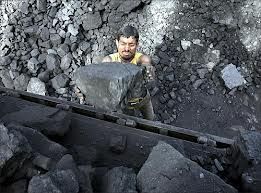 | « Back to article | Print this article |
 For a large part of the year, the mining sector continued to grapple with controversies related to allocation, production and pricing of minerals.
For a large part of the year, the mining sector continued to grapple with controversies related to allocation, production and pricing of minerals.
However, the sector seems set for a clean-up in 2014, helping boost investor confidence and growth.
The shift to gross calorific value-based grading of coal aligned domestic prices with international benchmarks.
Next year, the auctioning of more blocks and the finalisation of the surplus coal policy is likely to introduce transparency, while revised fuel supply agreements will ensure assured coal supply for fuel-starved power plants.
Two crucial legislative changes -- one for setting up the Coal Regulatory Authority and the other for amending the Mines and Minerals (Regulation and Development) Act --, set to be passed in 2014, would further improve regulation.
In 2013, the coal ministry identified 54 blocks to be auctioned, and framed the blueprint of the process.
Under the new regime, the ministry has already allocated 17 coal blocks, with about 8 billion tonnes of reserves to government companies, including 14 to the power sector alone. In the next round, blocks will be allocated to the private sector.
To auction blocks, the ministry has finalised a production-linked payment system based on revenue-share.
Bids will be invited based on a production-linked multiple -- the company quoting the highest multiple will be the preferred bidder.
The method minimises the risk for the developer compared to the upfront payment method.
The intrinsic value would be derived from the average selling price through the past five years, based on international free-on-board prices from the published indices of Platts or Argus, which assess energy prices.
On the production front, Coal India’s output growth marked a revival.
However, the company’s financials took a beating, owing to lower realisations from e-auction sales.
This was despite an average 11 per cent rise in low-grade coal prices announced in May 2013.
Also, issues related to trade unions and workers resulted in a minor impact on output.
The unions continued to threaten strikes against the government’s move to divest 10 per cent stake in the Coal India. Nevertheless, the company is hopeful production will rise five per cent to 475 million tonnes (mt) by the end of this financial year, even as want of green clearances continues to spoil plans to add capacities.
“Work in a few mines with production capacity of around 20 mt is stuck due to delays in green clearances.
“We expected 20 mt to come from the Magadh and Amrapali opencast projects in North Karanpura coalfields this financial year. But forestry approvals have not been given to us,” said Coal India Chairman Narsing Rao.
On the supply front, talks between Coal India and power companies concluded with an agreement on the terms of new FSAs.
The company has already signed 172 pacts with power utilities, which will increase availability.
However, lack of progress on the three rail corridors dedicated to coal evacuation will hit supply to power stations.
This is likely to dampen the prospects of evacuating 300 mt of coal output from mines.
Also, more clarity on the pricing front is expected once a regulator is set up.
It is likely the regulatory authority will be empowered to decide the methodology to fix prices, even as prices will be set by the Coal India board.
This will allow the Coal India management to decide prices and the current government control on